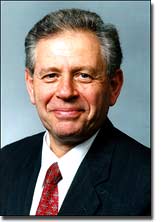Unified Spiral Field, Matter and Aether: An Introduction to Spiral Field Theory
Year: 2000
Keywords: Unification, Spiral Field, Matter, Aether
The spiral field theory has two principal features: (1) it yields novel relativistic relationships, stating that both the gravitational mass and electric charge of a particle decrease with increase ofits velocity and become equal to zero at the maximum velocity of light; (2) it assumes that the structure of everything in Nature is based on spiral fields. The elementary particles are constructed from toroidal spiral fields while the electromagnetic waves are constructed from helical spiral fields. The masses and electric charges of the spiral fields are defined by a degree and direction of their vorticity. The spiral fields exist at discrete energy levels and transform one into another when their energy levels change. At the lowest (zero) energy level, the toroidal spiral fields reduce to the spherical fields that form the zero-point energy ether (called dynosphere). The dynosphere performs three main functions: (1) when excited it creates both the outer toroidal spiral fields (or the matter) and the inner toroidal spiral fields with opposite vorticity (or the antimatter); (2) it serves as the medium for propagation of the electromagnetic waves; (3) it provides a dynamic (velocity) frame of reference for moving entities in the universe. While unifying the field with matter and ether, the spiral field theory avoids infamous "infinities." It confirms several known phenomena, including the structure of hydrogen atom and its atomic spectra. It differently explains several experimental results, including the increase in energy required for acceleration of electrons, the "red shift" in galaxies, etc. It also stimulates a number of propositions related to the structure of elementary particles and atoms.

